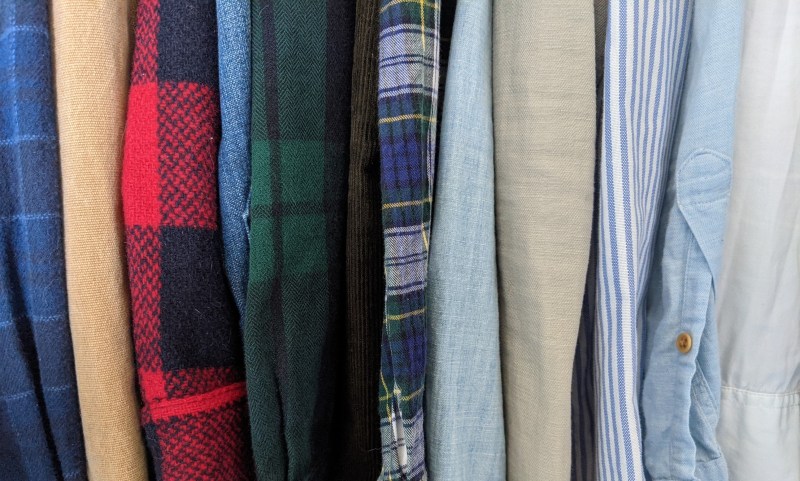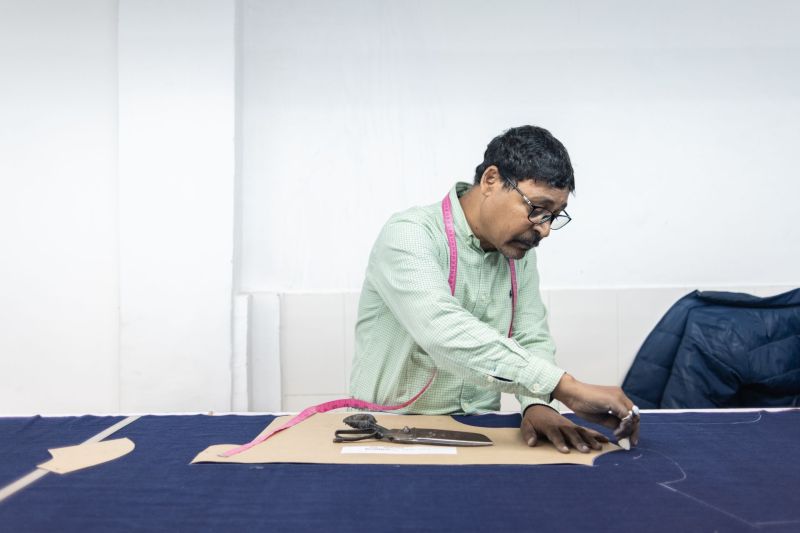Even the most fashionable people you know will tell you that they’ve gotten sick of their wardrobe before. Whether you’re embracing your personal style for the first time, or you’re well aware of it, but your wardrobe just lost its way somewhere, we all need a good refresh sometimes. Before you get started, know that this type of rebuild is a long-term project. You can purge everything you want, but don’t try to replace an entire wardrobe right away. Even if you can afford it, you will inevitably make mistakes and end up with more items you will never wear. After the teardown, rebuild gradually with a few items at a time.
If sustainability is a defining factor for building a new wardrobe, that’s even better. It has become impossible to ignore the enormous environmental impact of fashion, and we all have to do our part to fix the problem. The best style is sustainable because it avoids trends and relies on pieces that will always be cool. It helps to look at building a sustainable wardrobe as an investment upfront. You’ll need to spend more money on high-quality pieces, but they will last you far longer than cheap alternatives that you’ll have to replace.

Before you toss or buy anything, you’ll need to establish a vision of what you want your new wardrobe to look like. Take a look at what you have, then spend some time on social media and fashion editorials to find what you like. Ask a few close friends and family members what they think looks good on you and what doesn’t. A clear picture will start to emerge of what your personal style looks like.
Start with What You Have
The first rule of sustainable fashion is that the most sustainable clothes are the ones you already own. When you’ve come to the realization that your wardrobe needs a refresh, it is tempting to toss it all and start with a clean slate. The problem is that you don’t need a clean slate; you need a good starting point. Everyone has pieces in their wardrobe that define their personal taste and can work alongside stylish basics to create a well-rounded look. The best thing for the environment, for your wallet, and for building your personal style is to examine your wardrobe to find the pieces you enjoy the most.
After you’ve set aside the items that will set the tone for your new look, you can sift out the ones that can still bring value to your new wardrobe. Think fundamental items like solid color T-shirts, well-fitting jeans, and your favorite hoodie. These items have to be simple enough to not clash with anything and, most importantly, they have to fit. Every wardrobe needs simple basics, and even if you’ve been aimlessly accumulating clothes for as long as you can remember, chances are you have enough of these to contribute to your new wardrobe.
Finally, you want to pull any tailorable items that would look good if only they fit well. This includes blazers, slacks, dress shirts, chinos (for length), and some outerwear. If you’re in doubt, take it to your local tailor and ask them if they can do anything with it. Even most dry cleaners that do alterations can make an otherwise frumpy-looking item look good with a little nip and stitch. The same principle goes for old leather goods like belts and shoes. If they look beat up, but you like them, take them to your local shoe shop and see if they can be saved.
Secondhand First
The fashion resale industry has grown exponentially over the past few years. No matter where you live, you probably have a few local thrift shops with a decent assortment of used clothing. Of course, there are also plenty of resale websites. Some of the most trustworthy are Grailed, Poshmark, and The Realreal. The best deals will always be found on eBay, but shopping there requires more caution and research.

Tips for Wardrobe Quality Over Quantity
Quality has to be a fundamental factor in any item you add to your new wardrobe. Sustainable clothing can be worn for many years and can be fixed when anything breaks. Here are a few easy tips for discerning quality garments:
Expensive Does Not Equal Quality: There is no shortage of overpriced, poorly made clothing in the world. Direct-to-Consumer brands like Gustin, Relwen, and Billy Kirk make very high-quality goods at affordable prices by cutting out the middleman. Look for quality guarantees on their websites — if a brand trusts their product, then they will fix it for you if it breaks.
Avoid Blends: Artificial fabrics are fine in athletic wear, underwear, and outerwear, but when it comes to most other garments, you want to stick to 100% natural fibers. Wool and cotton will not last as long when cut with artificial fibers. Natural and artificial fibers age differently, which will distort the garment over time. A 5-year-old 100% cotton hoodie will hold its original shape far better than a 5-year-old blended fabric hoodie.
Give It a Feel: When at all possible, feeling a garment will tell you when it is quality or not. Quality fabrics are heftier, they have less stretch to them, and their colors often have more of a matte finish. Look at stitching to see if any of it is coming loose already. Solid metal hardware will have a denser sound when tapped than cheap metals with artificial coatings. This step is complicated by the fact that we buy most things online these days, but if you can force yourself to go out of your way to feel an item before you purchase it, then you know you really want it.
The Old and the New
Two of the most reliable sources of high-quality goods are very old heritage companies and very new startups. If a company has been producing clothing and accessories for over a hundred years like Alden or Gitman Bros., then chances are they’re using production techniques that most companies have replaced with cheaper methods. It also requires a certain level of sustained excellence to stay in business for that long.
Many new clothing companies like Kardo and Private White V.C. have adopted those same heritage production methods to create small batches of high-quality goods. Either way, buying from these companies will come with the assurance that your garments will last a very long time.
Above All, Have Fun Picking Out Clothes
Building a new wardrobe for yourself is supposed to be exciting, so have a good time with it. If anything doesn’t feel right, then don’t get it. Take advice from professionals and the people closest to you, but don’t let anyone force you into anything you don’t want. Personal style is just that: it’s personal. It’s the outward expression of your personality for all the world to see. So take your time with it and always trust your instinct.
A wardrobe rebuild is a long process — it won’t happen in a week or month. Think of it as a diet. If you’re doing it right, then a bunch of small steps will create permanent changes. Your actions will also be small steps that can lead to a permanent change in the environmental impact of fashion. So consider the long-term impact of all your decisions on both yourself and the planet.
Learn as much as you can along the way because the more you learn about clothing in general, the more you’ll know what’s right for you. If you come across a garment you’ve never seen before that catches your eye, give it a try. Look up any terms or materials you’ve never heard of. If you aren’t sure if a material is sustainable or if a company has a good reputation, look it up. The more you look into fashion, the more you’ll want to know. It’s a slippery slope, but it’s a fun ride all the way down.



